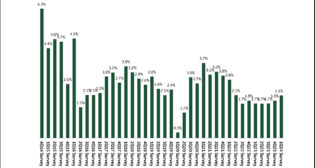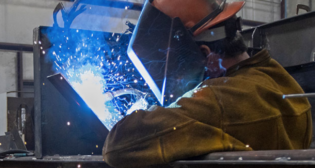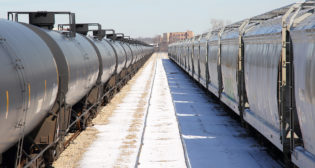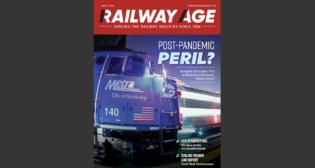
Tough sledding in the loco market
Written by David Nahass, Financial EditorFinancial Edge, November 2017: Last month’s Railroad Financial Desk Book identified the influx of new investment capital as a cause for concern for railcar investors. Not discussed was that as capital files into railcars due to their longevity and utility, few, if any, dollars moving into the rail economy are used for investing in locomotives.
Locomotives have fallen out of favor. The number of investors in locomotives is dwindling and the value of used locomotives are continuing to decline or sitting at a trough with no foreseeable recovery.
For the uninitiated, locomotives (both four- and six-axle) were big dollar investments for lessors, industrials and banks for decades. Before the mid 2000s, locomotives were big: big investment dollars, big cash flow and a prolific secondary market with a primary customer base of Class I railroads. What happened? Changes to the lease market, low interest rates, railroad profitability and bonus depreciation changed railroad investment in locomotives from lease to buy and have potentially changed the market forever.
In today’s locomotive market, new Investment opportunities with long-term value are few. The short-term lease market is almost nonexistent (except for short lines and industrials). New locomotive orders peaked, near term, in 2015 (before EPA Tier IV emissions restrictions were implemented). Since Tier IV, new locomotive orders are almost non-existent.
I discussed the market for used locomotives with a few industry veterans. When asked about the current state of the used locomotive lease market and locomotive values, one industry source told me that the Class I’s are returning every off-lease locomotive of less than 1,500 hp. In addition railroads are returning higher horsepower four-axle locomotives (for example, the GP38-2, a four-axle, 2,000 hp locomotive last built new in 1984) that for decades were every railroad’s workhorse.
For years, these units were considered the most desirable for investment. The shift away has amazed even experienced industry veterans. It seems that higher horsepower six-axle locomotives are being cascaded down to perform services previously completed by four-axle locos.
Put bluntly, locomotive supply exceeds demand. The oversupply is emphasized by frequent Class I auctions of four-axle and six-axle higher horsepower locomotives. Further compounding this problem is that the cascade effect does not always work down the line: One railroad’s trash is not always another railroad or industrial company’s treasure. Height, weight and track restrictions may prevent larger units from finding homes.
For investors, these are opportunities layered with levels of risk. Rental rates on used locomotives are in the lows $100s per day and possible even lower (for the short line and industrial market). Keeping units on lease is a difficult but paramount task. Leasing into these markets requires expertise and requires a level of service and maintenance to a potential lessee (especially for industrial companies without on-site expertise). This increases the difficulty.
What are the hopes for a rebound for this market? Longevity is on the side of investors. By one estimate, 80% of locomotives built 50 years ago are still in service. Keeping units fresh and ready for service (a riff on chance favoring the prepared) is one way to grab any available opportunity. However, demand for power is no longer what it once was. Chalk that up to another collateral effect from the decreases in freight volumes due to loss of coal traffic.
I also spoke with Steven Beal, President of locomotive manufacturer, rebuilder and lessor NRE. Beal also participates on Day Three (Locomotive Day) at the annual Rail Equipment Finance Conference. Beal said NRE has seen more inquiries from the industrial market for medium horsepower four- and six-axle power in the past three to four months. Why? He suggested that more product is moving in 2017 than in 2016 in markets such as steel and petrochemical. Beal also notes that the number of locomotives in storage has declined by half Y-O-Y to roughly 2,500.
I asked Beal about the new locomotive market. He suggests there might not be any significant orders for new locomotives until 2020. There is a push into modernization of older units where, through some investment, a railroad can turn an older unit into a unit with modern, affordable technology for a fraction of the cost. This may take preference versus building new Tier IV units.
Beal noted that the pre-Tier IV era might have been a peak for the new locomotive order book. This might be the case until the Tier IV unit delivers comparable cost for hauling freight as pre-Tier IV units. It is difficult to rationalize a new unit’s price when modernization delivers modern technology and emissions compliance for one-third of the cost.



